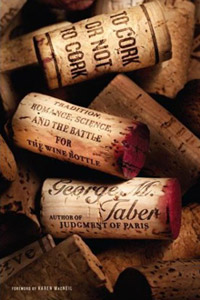 For more about what this is part of look here.
For more about what this is part of look here.
Eric Delia may be be relatively new to blogging, but has some interesting things to say — check out the post titled A Disturbing Trend. I’m hitting the road for a few days, but had to post this first because . . . Levi Stubbs and Bell’s Kalamazoo Stout, how brilliant is that?
You find the full length Fantasy Dinner here, but Eric also has a slightly shorter version for us CliffsNotes types.
In case you forgot, the questions are: If you could invite four people dead or alive to a beer dinner who would they be? What four beers would you serve?
1. Bernardo O’Higgins – One of the leaders of the Chilean War of Independence that was fought against colonial power Spain. Seems like an interesting and controversial historical figure that would be worth having around, if only to give his perspective on the time period and his struggle to defeat an imperial army. Since I’m somewhat of a history buff, I think he’d be a fine candidate for this soiree.
Beer: Kross Stout, modeled on an Irish Stout and made by a microbrewery in Chile, which I think would suit this guest’s tastes, seeing as how he’s half-Irish.
2. Bill Shankly – Liverpool FC’s most famous manager, who triumphed to bring the team from the lower rungs of the Second Division to the top of the First, and brought a slew of championships during his tenure as well. Shankly came across as a tough but stand-up guy who loved the game of football (soccer) and had an honorable and admirable approach to it, too. The table needed a prominent sports figure, and he’s one that immediately came to mind.
Beer: Traquair Jacobite, in honor of his Scottish roots and because it’s an all-around damn good beer in the first place, something I think Bill would appreciate.
3. Levi Stubbs – Lead singer of the R&B group The Four Tops, whose ability to sing out of his range lent the group’s songs a sense of urgency and liveliness. He’d bring vivacity to the conversation, plus a bit of cool and some culture to our group. I’m also a fan of all different kinds of music, so it was tough to pick one person to sit in that spot, but Levi was one of the first that I thought of. I think he’d be a great guest.
Beer: Bell’s Kalamazoo Stout, seeing as how both he and the beer are from Michigan, and I just think cool people would naturally migrate toward a quality Milk Stout like that. Either that or a Sam Adams Boston Lager; simple yet satisfying, with a laid-back flavor profile that the cool crowd would also enjoy, I guess.
4. My paternal great-grandfather – An immigrant from Croatia (then part of the Austro-Hungarian Empire), he came to America in 1901 and worked on the Pacific Railroad. Made it all the way out West, into Washington (prime hop country) and then to northern California. He owned a small farm where he made my grandfather walk to the market with eggs or produce to sell. Back on the farm, they would make their own homemade wine, even during the days of Prohibition.
Beer: Victory Prima Pils or Budweiser Budvar. I picked the two because I think a German or Czech Pilsener would suit him well, even though he was more of a wine guy. Something crisp and refreshing may remind him of time in Europe as a young man, perhaps getting a hold of a Bohemian offering or two in his day. Nevertheless, to be able to talk to this man about the trials and tribulations he faced by starting a whole new life in a completely different country would be fascinating to me. Sure, many families may be able to tell a similar tale, but that’s what makes this quintessential American success story a classic.
 Ted at Barley Vine has posted his roundup for The Session#10: “Let it snow, let it snow.”
Ted at Barley Vine has posted his roundup for The Session#10: “Let it snow, let it snow.” Only in the last couple of years has been Hibernation been available in New Mexico, although other
Only in the last couple of years has been Hibernation been available in New Mexico, although other  For more about what this is part of
For more about what this is part of 